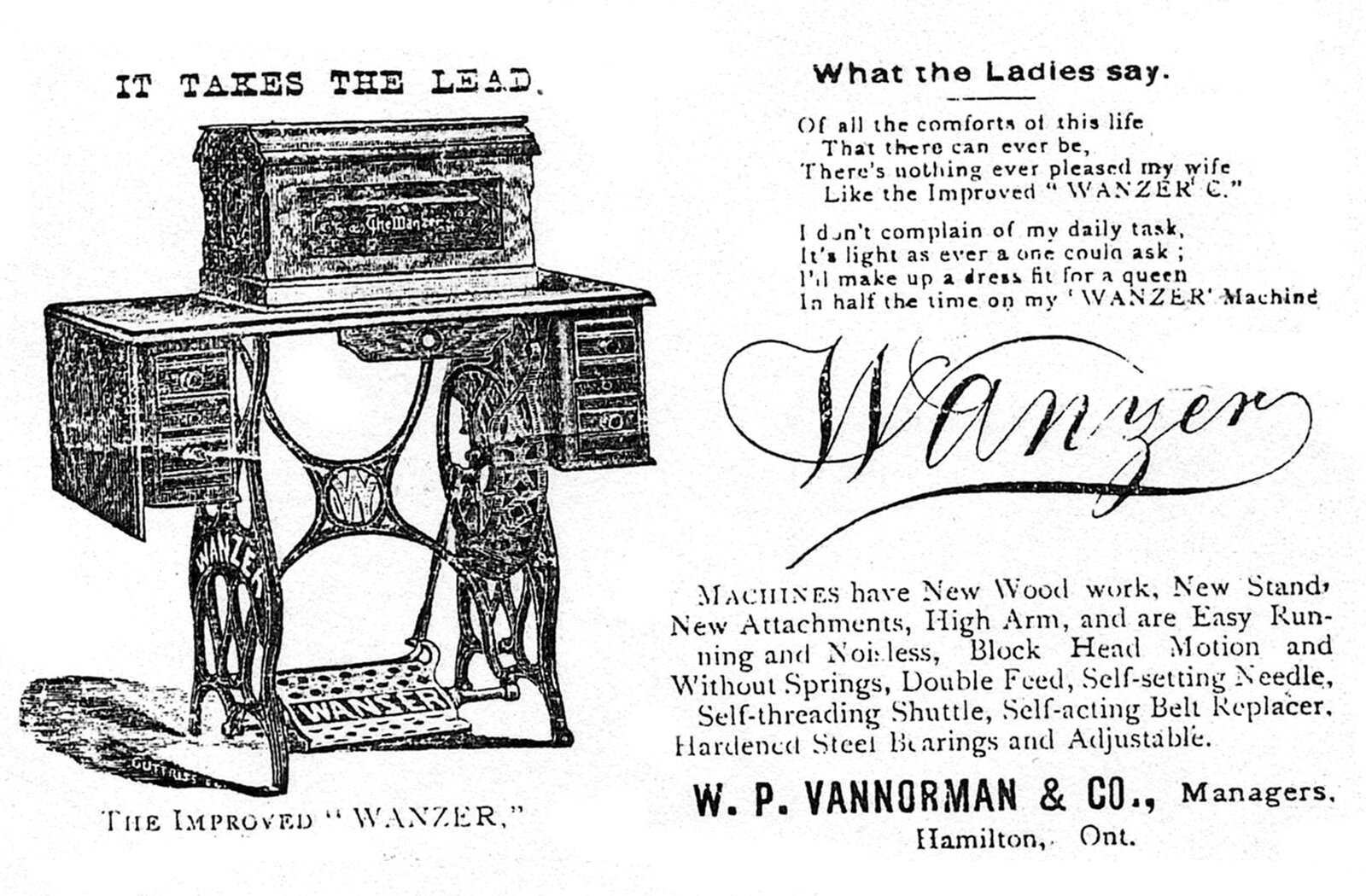Canada Sewing Machine Manufactory
(1860)
Hamilton was once the sewing machine manufacturing capital of Canada. In the 1850s and 1860s, patents protecting U.S. sewing machines did not apply in Canada. The American salesman and entrepreneur, Richard Mott Wanzer, came to Hamilton around 1860 to take advantage of this opportunity. He established a small machine shop in this building to produce U.S.-designed sewing machines for the Canadian market.



Business was modest at first. Wanzer himself went door-to-door peddling the four sewing machines a week that his half-dozen workers produced. But only three years later, over 140 men and boys turned out over 70 sewing machines a week from this building.
Wanzer built a large new four-storey factory at the corner of King and Catharine Streets in 1868. Inside this new plant, production was re-organized and streamlined. One workroom sign summed up the new atmosphere: “Workmen who do not keep up their complement of five hundred a week are expected to work at night”.
The sewing machines produced by skilled machinists in Wanzer’s factory were sold worldwide. Wanzer himself won the award for best sewing machine in the world at the Vienna International Exposition in 1873. Overproduction and decreased demand forced Wanzer into bankruptcy in 1892.
Wanzer’s success also benefited the city’s foundry industry. Edward and Charles Gurney built a separate shop and employed 11 moulders full time to produce castings for the Wanzer plant. Wanzer built his own foundry sometime in the 1870s.
